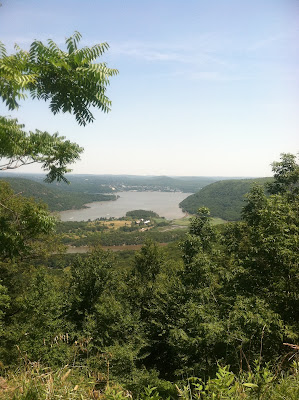A Slavic Saturday Evening
The cloying perfume of incense had barely left my clothing, when the sharp smell of sauerkraut and steamed sausages suddenly invaded my nostrils with a command jolting me out of heaven and back to earth. My friend, Evan, and I attended the 5:30 P.M. Vespers service at the Russian Orthodox Cathedral of the Holy Virgin Protection on 2nd Street in the Lower East Side. Once an enclave of Eastern European immigrants, this area still boasts of a number of Ukrainian, Russian, Georgian, and Carpathian communities represented by the various churches bearing those names. Holy Virgin Protection Cathedral actually belongs to the Orthodox Church in America, the most assimilated of these communities, formerly known as the Russian Orthodox Greek Catholic Church in North America.
Most all of the 105-minute long service was conducted in English, with just a few dollops of Old Church Slavonic thrown in as perhaps a reminder of the community's heritage. Every word was sung--chanted actually--including the instructions: "Let us now sing the Thus-And-Such in the 6th Tone." The little choir of six people sang sweetly in the lilting polyphonic chant of the Russian Church, a sound not at all strange to Western ears. Some of the greatest Russian composers, Tchaikowsky and Rimsky-Korsakov, wrote musical settings for the Orthodox liturgy. Unaccompanied by instruments, the blending of voices was like the singing of the angels.
Those voices echoed in a darkened building lit only by candlelight that barely illuminated the wide-eyed icons of saints and angels surrounding the congregation like pictures of loved ones on the walls of the family room. The open floor without pews created an atmosphere of freedom of movement within the highly structured ritual that took place at various points in the whole building. Only the iconostasis or icon screen, punctuated with three doors, separated the main part of the church-the nave-from the altar area or sanctuary proper. This wooden screen was about ten feet high and it had icons painted on panels framed by decorative moulding. The central portal was a double door, about four feet high and backed with a curtain. When the one of the deacons or the priest drew aside the curtains and opened the doors, they revealed a canopied altar lit with candles on either side and in front of a cross. The canopy over the altar was made of carved filigreed wood with little candles strategically placed atop each supporting column inside the corners giving a soft Oriental glow to it the entire structure. This inner sanctum reminds one of the King's throne, and it is no wonder the Orthodox refer to those doors as the "Royal Doors." When the doors are opened, we are in the Presence of the King of Kings.
With a seemingly endless round of psalms, prayers, incensings, and hymns chanted by clergy and choir, the service placed us both in a frame of meditation and prayer differently ordered than by our more familiar Protestant models of worship. We left the place spiritually satisfied and not a little bit tickled by Fr. Michael's enthusiastic hospitality! At the end of the Service, he gave us a quick tour of the building and we were off to Veslka's, New York's celebrated Ukrainian diner on Second Avenue and 9th Street. The stuffed cabbage stuffed me well and the beet and horseradish salad was delectable. All of a sudden, Evan's Ukrainian roots became mine for a moment-a phenomenon so typical of life in New York City, where one can enter the life of other cultures and enjoy them for what they are. Tonight, I was totally Slavic and felt so happy for my friend whose first experience of Eastern Orthodoxy put him in touch with his great-grandparents who lived here long ago, worshipped in one of these churches, and no doubt ate plenty of stuffed cabbage, borscht, and sauerkraut on the streets of the Lower East Side.

Comments